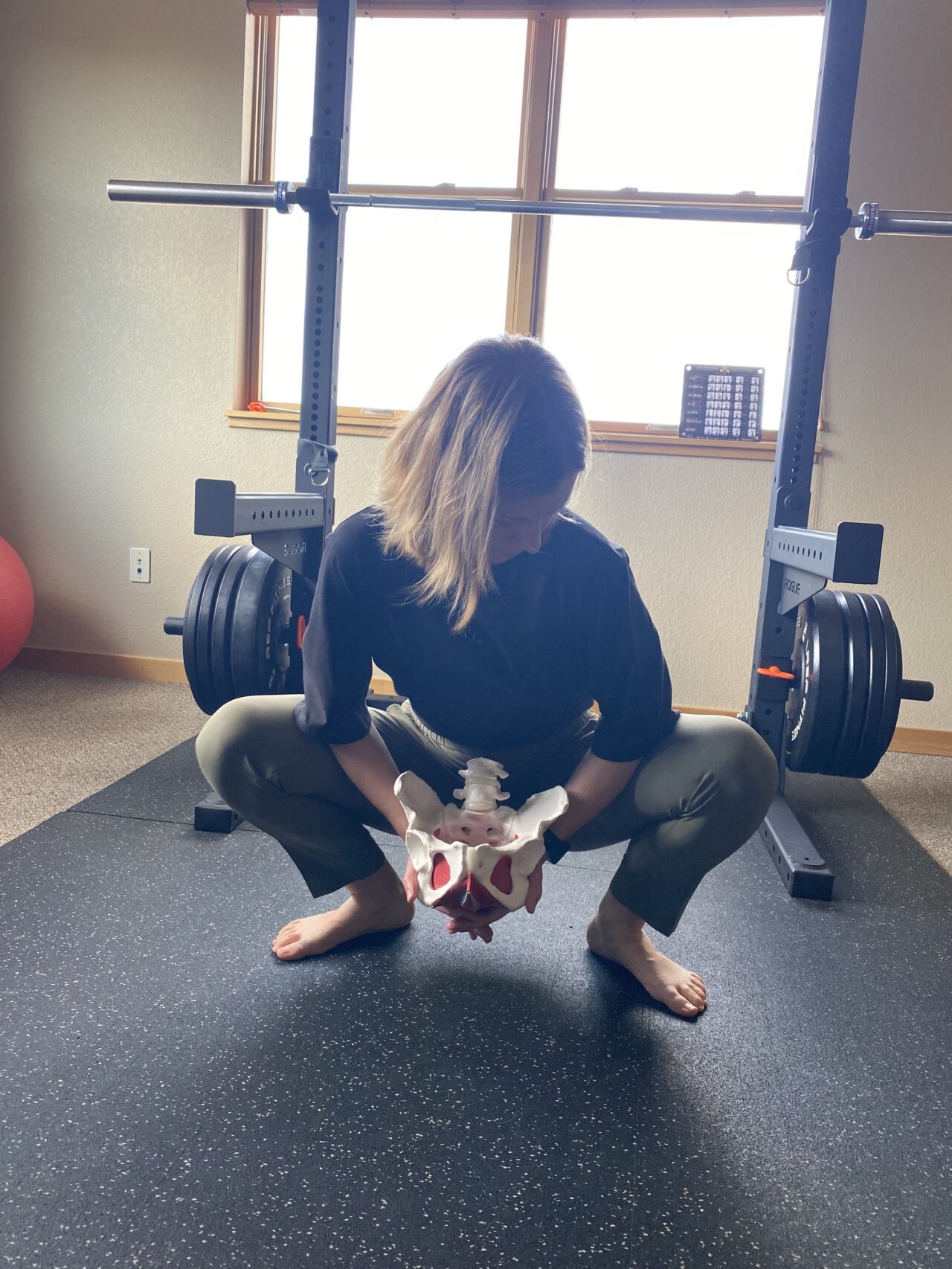At our Boulder pelvic physical therapy clinic, we often see the cause of a pelvic floor dysfunction being tension, not weakness, of pelvic floor muscles. This applies not just to those that identify as female, but those identifying as males as well. Muscles that are holding more tension than they should, cannot properly function. So what can we do with pelvic health physical therapy for pelvic floor muscle tension? There are really 3 broad categories for ‘downtraining’ the pelvic floor muscles, aka decreasing their tension.
Pelvic Floor Direct
This category of intervention is just as it sounds, direct release of pelvic floor muscle tension. In the pelvic physical therapy world this involves internal work to directly stretch tense muscles within the pelvic floor. Our Boulder pelvic physical therapists can perform this intervention. Patients can learn how to directly stretch these muscles internally on their own as well with something like a pelvic wand. This would also include interventions such as breathing that are targeted to directly expand and relax the muscles of the pelvic floor and dry needling of the pelvic floor.
Pelvic Floor Indirect
The structures around your pelvic floor can greatly influence the functioning of your pelvic floor. In our Boulder pelvic health clinic, we often see, for example, strength deficits in the hips or abdomen or low back leading to an overuse of the pelvic floor muscles to try to create stability. Improving the surrounding support of the pelvic floor is key for decreasing pelvic floor tension in the long run. Interventions most often include strengthening of surrounding musculature based on someone’s individual strength needs. Additionally, if applicable, addressing joint or muscle restriction in surrounding regions with various interventions just a dry needling, foam rolling, joint manipulation, etc. can also lead to a better functioning pelvic floor. This category can tend to be overlooked if you are not seeing a pelvic therapist that is looking at the whole system. Our Boulder pelvic physical therapists assess regions outside of the pelvis in order to determine regions that will indirectly influence the pelvic floor.
Central Nervous System
The pelvic floor is a unique set of muscles in the fact that they are innervated by nerves (namely the pudendal nerve) that is part of our autonomic nervous system. The autonomic nervous system is essentially our ‘fight or flight’ response. So unlike any other muscle group, our pelvic floor muscles are especially susceptible to stress, anxiety, emotion, and trauma. Our muscles will hold tension or tone when our autonomic nervous system is ‘upregulated’. You could physically stretch the pelvic floor muscles all day long, but if the nervous system is not addressed and calmed down, that stretching will never be effective. Interventions in this category include breathing techniques, vagus nerve stimulation if applicable, improving body awareness, downregulation via muscle releases, and general education on stress management techniques.
All of these categories are important and none should be used in isolation. To truly decrease pelvic floor tension multiple approaches need to be considered. You should see a pelvic health physical therapist to assess if you have pelvic floor muscle tension, and what treatments will be most effective in helping to decrease it.
Schedule an appointment today with one of our pelvic health specialists at Mend in Boulder or Lafayette.

